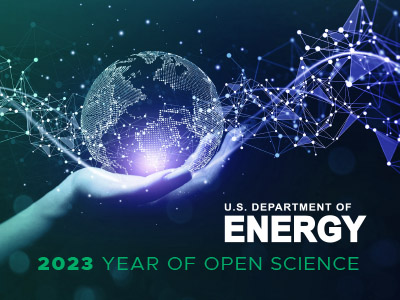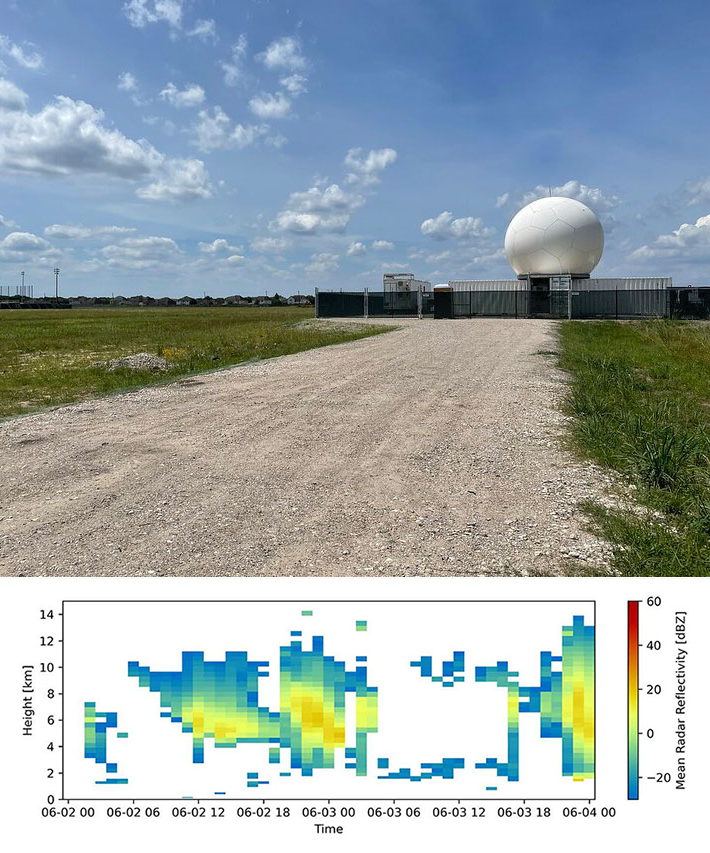 The Earth Model Column Collaboratory uses data and weather observations to create climate models and forecast predictions
The Earth Model Column Collaboratory uses data and weather observations to create climate models and forecast predictions
In January 2023, the White House Office of Science and Technology Policy launched the Year of Open Science to advance national open science policies across the federal government. During the year, ARM and ASR are publishing a series of stories on work to advance open and equitable research. The following is based on a feature story published by Argonne National Laboratory.
Climate science is typically conducted by two communities that often work separately: modelers and observationalists. Scientists at Argonne National Laboratory, the NASA Goddard Institute for Space Studies, Pennsylvania State University, and Texas A&M University designed an open-source research platform to bridge the gap between those communities.
The Earth Model Column Collaboratory (EMC²) is a software package that pairs complex data with weather observations to create highly accurate climate models and forecast predictions.
Scientists developed EMC² to ease comparisons between climate and weather models with observations from weather instruments. As a modeling platform and weather instrument simulator, the tool provides a common point for collaboration between climate modelers and observationalists.
The EMC² team includes developers and users of data products from the U.S. Department of Energy’s (DOE’s) Atmospheric Radiation Measurement (ARM) user facility. DOE’s Atmospheric System Research (ASR) and NASA provided support for the development of EMC².
Addressing Long-Standing Challenges

EMC² provides an easier way to compare cloud models with observations.
Despite the enormity of clouds, many of their dynamics happen on a small scale. The numbers, shapes, and sizes of the liquid drops and ice crystals contained in a cloud, for example, will determine how it will scatter light or emit and absorb heat.
So, to better understand cloud properties, researchers rely on computer-generated climate models. These models can bring together information from different weather instruments, physics calculations, and other observations to increase our knowledge of how the atmosphere works.
Due to limits in computing power, climate models must simplify the way clouds are represented. This introduces uncertainty in projections of cloud behavior and climate change. Typically, to improve cloud representations, researchers compare model results with observations.
Results from current climate models don’t directly compare to those from radars, satellites, and other sensors whose signals can’t directly detect key cloud parameters such as liquid water content and number of drops. Instead, they detect microwave and visible light reflected by clouds and precipitation. As an instrument simulator, EMC² can convert the more detailed model-simulated cloud parameters to these weather instrument signals.
Another complication in climate modeling is the size of the geographic areas that researchers want to study. Represented as points on a grid, these areas are typically around the size of a major metropolitan area. However, clouds and precipitation can cover areas as small as a neighborhood. These small areas of clouds and precipitation are sampled by radars and satellites.

To solve this problem, EMC² helps represent the spatial variability of cloud cover inside each grid cell on smaller scales like those covered by the weather instruments. This smaller reference point allows climate scientists to evaluate models more accurately.
Leaning on ARM Data
The EMC² team used data from the 2015–2017 ARM West Antarctic Radiation Experiment (AWARE) as a test case in the development of EMC². They compared AWARE data on stratocumulus cloud properties in the Antarctic with simulations from the NASA Unified Weather Research and Forecasting (WRF) model. EMC² enabled validation of the NASA model simulations with the ARM data.
The newest version of EMC² was completed in 2022. Currently, the team is using data from the TRacking Aerosol Convection interactions ExpeRiment (TRACER), a 2021–2022 ARM campaign near Houston, Texas, along with the NASA Unified WRF model.
Bobby Jackson, an Argonne assistant atmospheric scientist who developed the EMC² code with Penn State’s Israel Silber, reports he is pleased with the output of EMC² and that the NASA model simulated the life cycle of the storms observed during TRACER.
As open-source software, EMC² allows researchers and the public to easily add, use, and modify models and observations.
“That’s the beauty of open science: Someone brings us an issue, we fix it and improve it,” said Jackson. “We want people to use it, test it, and give us feedback.”
Further information about the methods, design, and access to EMC² is available in a 2022 paper led by Silber.
“This kind of open access will help us better balance comparisons between models and observation,” said Jackson. “It will also provide that much-needed bridge between these historically separate communities.”
# # #This work was supported by the U.S. Department of Energy’s Office of Science, through the Biological and Environmental Research program as part of the Atmospheric System Research program.

